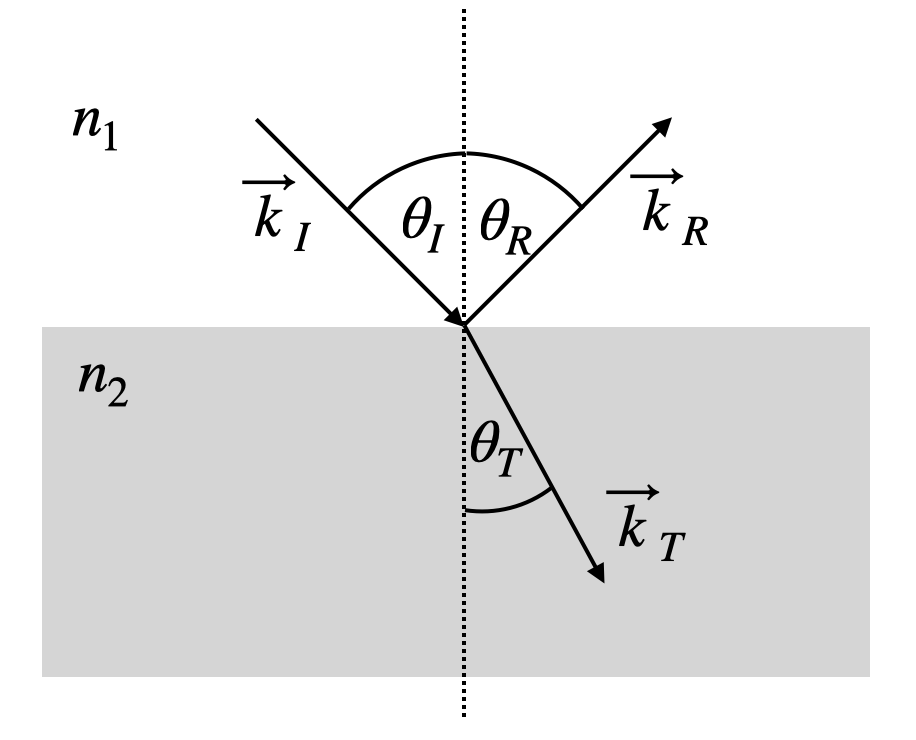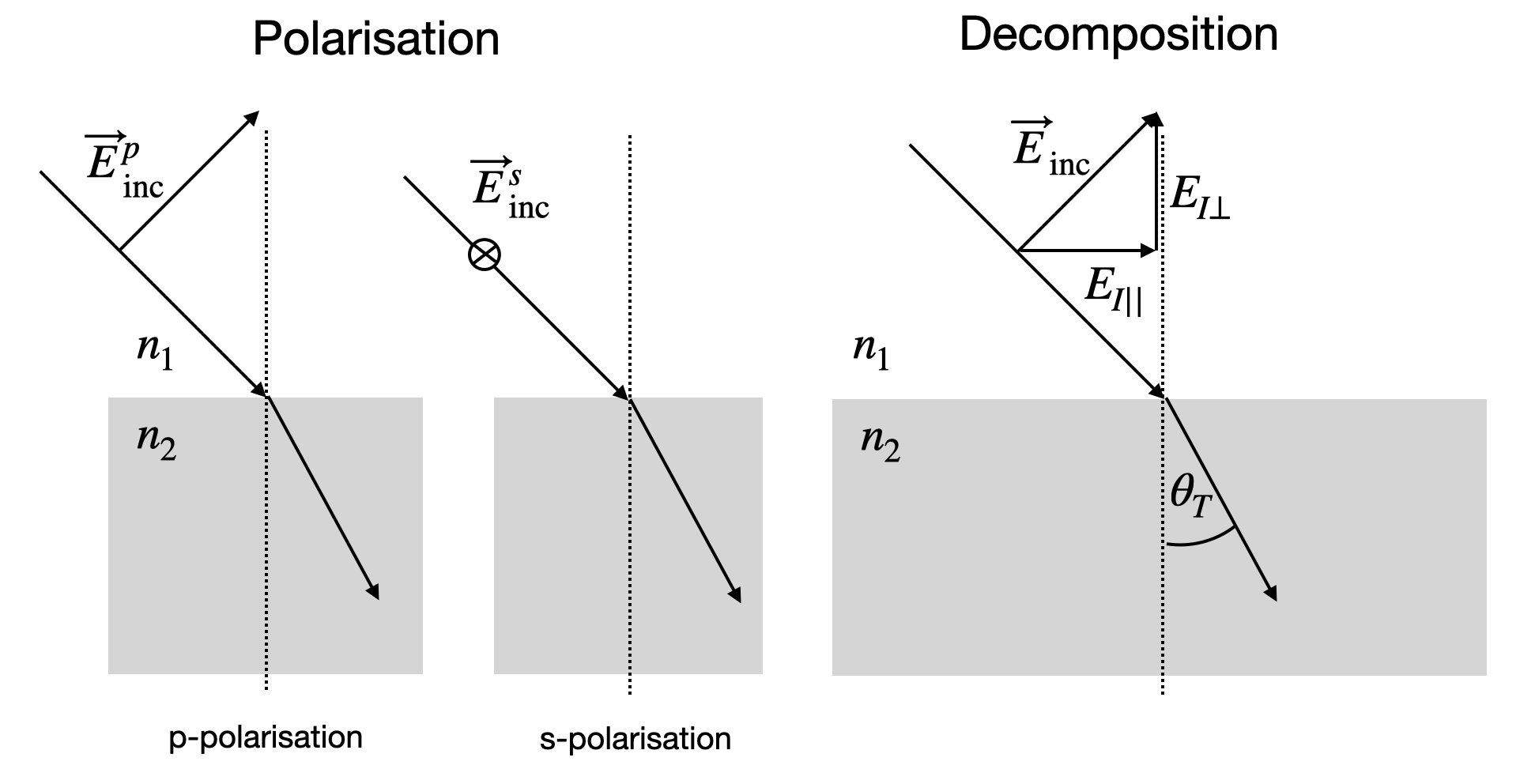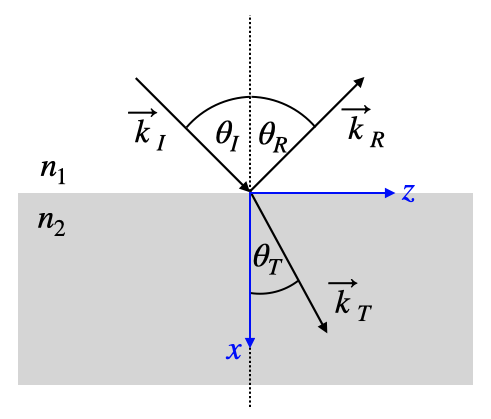This page was generated from `/home/lectures/exp3/source/notebooks/L14/Reflection and Refraction.ipynb`_.
Reflection and Refraction of Electromagnetic Waves¶
Before we have a look at the behavior of electromagnetic waves at boundaries, we would like to setup the stage for those consideraations. For this purpose we need to define the geometry we are referring to and also have a look at the electric fields (and magnetic fields) that will be present. The sketch below shows the wavevectors of the incident

Fig.: Polarization of an electric cloud of an atom.
These wavevectors are connected to the following plane waves, we will consider. We will first assume that these three waves have different frequencies as well, even though we may guess that they have the same as they all stem from the incident wave.
What we have to consider, however, is the direction of polarization of their electric or magnetic fields. This is important and shall not be confused in the following. We will differentiate between
p-polarized light: electric field is in the plane of incidence (given by the k-vector and the surface normal), also called transverse magnetic (TM)
s-polarized light: electric field is perpendicular to the plane of incidence, also called transverse electric (TE)
This is sketched in the image below.

Fig.: Polarization of an electric cloud of an atom.
To apply the boundary conditions, we will further need to split thesse polarisation vectors into components, which are parallel (
Boundary Condition¶
The boundary conditions fo rthe electric or magnetic field passing an interface are derived from the Maxwell equations. As I assume you have don this already in the electro- and magnetostatics lectures, I will only resume shortly here.

Fig.: Polarization of an electric cloud of an atom.
Let us take the divergence of the displacement field
we can apply Gauss’ theorem and replace the volume integral over the divergence with an integral over closed surface of that volume
where
where
This also says that there is a jump in the normal electric field component
as
The right sketch in the above Figure indicates the calculations that yield the boundary conditions for the parallel components of the electric and magnetic field. Here we use the Maxwell equation
Integrating both sides over an area allows us to use Stokes theorem, stating that the integral over the rotation of an electric field can be transformed into a closed loop integral over the electric field.
Letting the area go to zero as well, we find
or
saying that the tangential component of the electric field is conserved. In the case of zero surface currentsm, this is also true for the magnetic field (
Reflection/Refraction¶
We can now continue to calculate the mathcing of frequency and wavevector at the interface as well consider the amplitudes of the electric and magnetic fields.
Frequency and Wavevector Matching¶
Recalling the above formulas for the incident, reflected and transmitted plane waves, we can explicitely write down the components of the wavevectors of the three waves in our cordinate system

Fig.:
According to that drawing, we have
Note that the component
and
on the other side. We now want that those field mathc according to our previously described boundary conditions.
This matching of the field shall be valid at all times, which directly requires
This is what we already guessed. Along the interface we also need to have a phase mathcing of the waves as already discussed in the wave optics chapter. This means that
at all positions
Since the magnitude of the wavevector of the incidenet and the reflected light is the same (both wave travel in the same material), we immediately find
For the incident and the transmitted wave we have to take the change of the wavenumber into account, which gives.
which is Snells law. Snells law is the result of the conservation of the parallel component of the wavevector across an interface, while the normal component has to have a jump according to the refractive indices.
